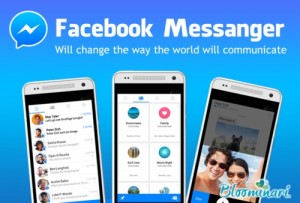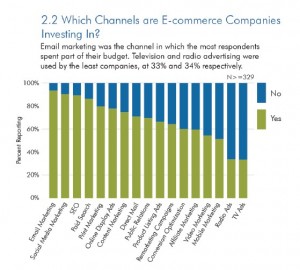
Creative roles are changing. As the marketing and advertising landscape evolves—and technology continues its incessant dominance—traditional agency roles are becoming blurred. These days, traditional roles are being coupled with digitally based responsibilities, such as development and strategy. As organizations grow larger and more complex, project managers and their teams run the risk of becoming shut off from one another and operating in silos.
Despite this transformation, it’s important to make one thing clear: Creative roles are not disappearing. No, it’s not time to completely wave goodbye to the “copywriter” or the “art director” at your agency. Instead, it’s time to reevaluate how they fit across your team. The new, modern creative is often an expert in at least one area of the creative process, and also collaborative and competent in other fields and skills. In other words, their skills are cross-functional.
Cross-functional teams blend formal and informal functional departmental roles, boundaries, and hierarchies. They generally emphasize non-binding roles that encourage a flat-structured approach. Whereas traditional roles generally fit into one of two categories—technical and non-technical, these integrated positions demand a wider variety of skills and critical thinking.
As can be assumed, these nonconventional integrated roles require a non-conventional team. And recruiting for modernized creative roles requires a different process than finding traditional team members.
The Evolution of Digital
To examine this demand, let’s look at the facts. By the end of 2016, digital ad sales were predicted to surpass their traditional TV counterpart for the first time. That means that, at that time, digital was projected to represent nearly 37 percent of all U.S. total media spending.
To respond to this, most contemporary projects require a wide variety of skills. Let’s consider the intricacies of a website project. As you know, it’s not as simple as onboarding a web designer and letting them work their magic. Web projects require content, user experience, SEO, and social media, all of which require disparate but unified skillsets. And unless you’re a large agency with a limitless budget, it can be assumed you can’t afford a specialist for each component.
What you can afford, however, are several team members with multifaceted skillsets. These days, it isn’t uncommon for modern agencies to blend UX and design, SEO and CRM, and designer and developer roles. Having a group of talented individuals who are competent across several stages of a project not only helps teams execute campaigns, but it also saves them money, time, and resources.
Unfortunately, cross-functional employees do not grow on trees. To our knowledge, students are currently unable—and probably will never be able—to achieve a Bachelor of Arts in Cross-Functional Advertising. Oftentimes, unless individuals are exposed to an array of responsibilities in previous jobs, cross-functional skills are not necessarily a signifying factor. However, with this in mind, it’s still entirely possible to recruit around a specific group of skills.
So how do project managers build and lead a cross-functional team?
Building the cross-functional best teams starts at the top. Projects managers must identify and engage a team of people with the right skills, qualifications, and enthusiasm for the project. Doing so requires special attention to detail. When recruiting cross-functional team members, it’s important to seek balance.
As Glassdoor points out, just like cross-functional teams, cross-functional job seekers tend to be very specific with their goals. That’s why it’s important to create job descriptions that cater to the skills and experiences you seek. Take extra time to learn about in-demand skills within your industry and see if they align with your needs. Here are four pointers:
1. Embrace diversity
Often, cross-functional job candidates are diverse in terms of experience, gender, age, skills, and seniority. Keep this in mind when recruiting—and embrace the diversity.
In 2015, Millennials surpassed Generation X to become the largest generation in the American workforce. As more and more younger workers are entering the workforce, the term “digital natives” has increased in popularity. In short, the term signifies someone who was raised in a digital, media-saturated world. While not all millennials are digital natives, and not all digital natives are working in advertising, those who are generally have at least an understanding of the digital landscape.
While we’re not looking to generalize the skill set of digital natives, what we’re saying is it’s important to keep an open mind when hiring. And remember, some skillsets are better taught in the workplace. Who knows? Perhaps you’ll stumble across a young copywriter with a natural propensity for SEO.
2. Prioritize skillsets
While it’s important to keep an open mind when recruiting candidates, it’s also important to identify the top skills you’re looking for. When looking to staff cross-functional roles, it can be tempting to get caught up in the ideal candidate. Keep in mind that this can potentially taint the interview process.
As a rule of thumb, do not rule out a candidate based on one or two missing qualifications. Instead, consider the comprehensive picture. Think about it; If you’re in search of a graphic designer who is also familiar with UI or UX, chances are, he will spend most of his time at your agency as a designer. Instead of focusing on small facets of a resume, prioritize overall skillsets.
Remember, cross-functional job candidates have varied backgrounds. Allowing your candidates to flourish in their roles is the only way they’ll become more rounded.
3. Discover experts
Truth be told, there are simply certain candidates who possess more product or industry knowledge than others. Hiring subject matter experts (SMEs) can help save your organization time and money during the onboarding process. Not only that, these candidates have the potential to distribute that wealth of knowledge across departments.
That said, finding SMEs takes a little extra effort. Unlike junior-level candidates, who are eager to apply to nearly any job, these specialized individuals have the influence to pick and choose where they want to apply. Oftentimes, these candidates only check job boards, forums, or websites that they know and trust. Below are some specialized job boards worth checking out:
- Inbound.org
- Mashable Jobs
- AdRants.com
- VentureBeat.com
- Krop.com
- MediaBistro.com
It’s also worth leveraging your own social network to find SMEs and top candidates. Over the years, LinkedIn has solidified itself as the most reliable network for social recruiting. Try it out. You may be surprised.
4. Hire based on culture
Sure, you can assess candidates’ skillsets and propensities. However, to ensure that a candidate will truly fit in across multiple departments and functions, it’s best to identify whether or not they’re a cultural fit.
In terms of recruiting, cultural fit is the likelihood that candidates will reflect—or be able to adapt to—the core beliefs, attitudes, and behaviors of your organization. In fact, a 2005 study revealed that employees who fit in with their organization, coworkers, and supervisor had greater job satisfaction, were more likely to stay with their team, and displayed superior job performance.
Hiring cross-functional employees takes a little extra effort than hiring for traditional roles. After all, you will be assessing these employees from a variety of angles—including their ability to learn and develop new skills. If you assess cultural fit in the recruiting process, you’re more likely to hire team members who will flourish in their unconventional roles, save you time and money, and drive growth and success.
Business & Finance Articles on Business 2 Community(96)
Report Post





